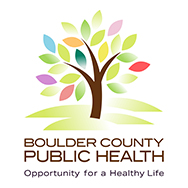Air Quality Updates
People living, working or traveling in and around the Marshall fire burn areas can opt-in for text and email alerts to access instant, real-time, air quality information 24/7 from 25 particulate monitors strategically positioned throughout areas affected by the Marshall fire and in the surrounding communities, including a dedicated monitor for all schools in burn areas.
- Subscribe to receive air quality alerts via text or email
- Find a monitor by map
- All current monitor locations
Measuring Air Quality
BCPH’s air quality monitors track the volume of ultrafine pollutants in the air called particulates. The monitors look for particles that are two- and one-half microns or less in width (PM2.5), which is about 30-times smaller than a strand of hair. Powered by solar energy, the waterproof monitors use wireless connections to transmit real-time, 24/7 air quality measurements.
Air monitoring results are presented using the Environmental Protection Agency’s (EPA) U.S. Air Quality Index (AQI), which uses a measurement from 0 to 500. The AQI values are presented using colored-coded categories to represent the current levels of health concern, making it simple to determine the air quality in a specific location. The higher the number, the higher the air pollution detected and greater potential health risk.

Air Quality After a Fire
The ash and debris from the Marshall fire, which burned vehicles, homes, and other modern structures, contains unhealthy particulates that can enter our bodies through the air we breathe. Snow and moisture can keep potentially harmful particulates on the ground and out of the air. However, air quality will fluctuate when the affected areas dry out and the wind speeds increase.
Please note: Some websites and weather apps may report the region’s air quality to be good or moderate. However, these sources may be getting information from monitoring devices located too far away from the affected areas to provide an accurate reading.
Additional Air Quality Monitoring
Preliminary analysis of outdoor air measurements conducted by the National Oceanic and Atmospheric Administration (NOAA) in areas affected by the Marshall fire found that levels of volatile organic compounds (VOCs) are comparable to ordinary urban air pollution.
NOAA will conduct additional VOC monitoring in the burn areas to ensure levels do not increase during the debris removal process.
BPCH is working with CU to study indoor air quality, specifically VOC levels. Based on this research, BCPH recommends that residents in the burn areas mitigate smoke impacts in their homes or businesses and utilize activated carbon filters on their HVAC systems or freestanding air cleaners.
Windy Days
If you are in the burn areas or the surrounding communities on a windy day, limit outdoor activity or stay inside and keep windows and doors closed.
If you must be outside when the wind is active, wearing an N95 mask is highly recommended. Anyone with respiratory illnesses is advised to talk with their healthcare provider about what they can do to stay safe.



